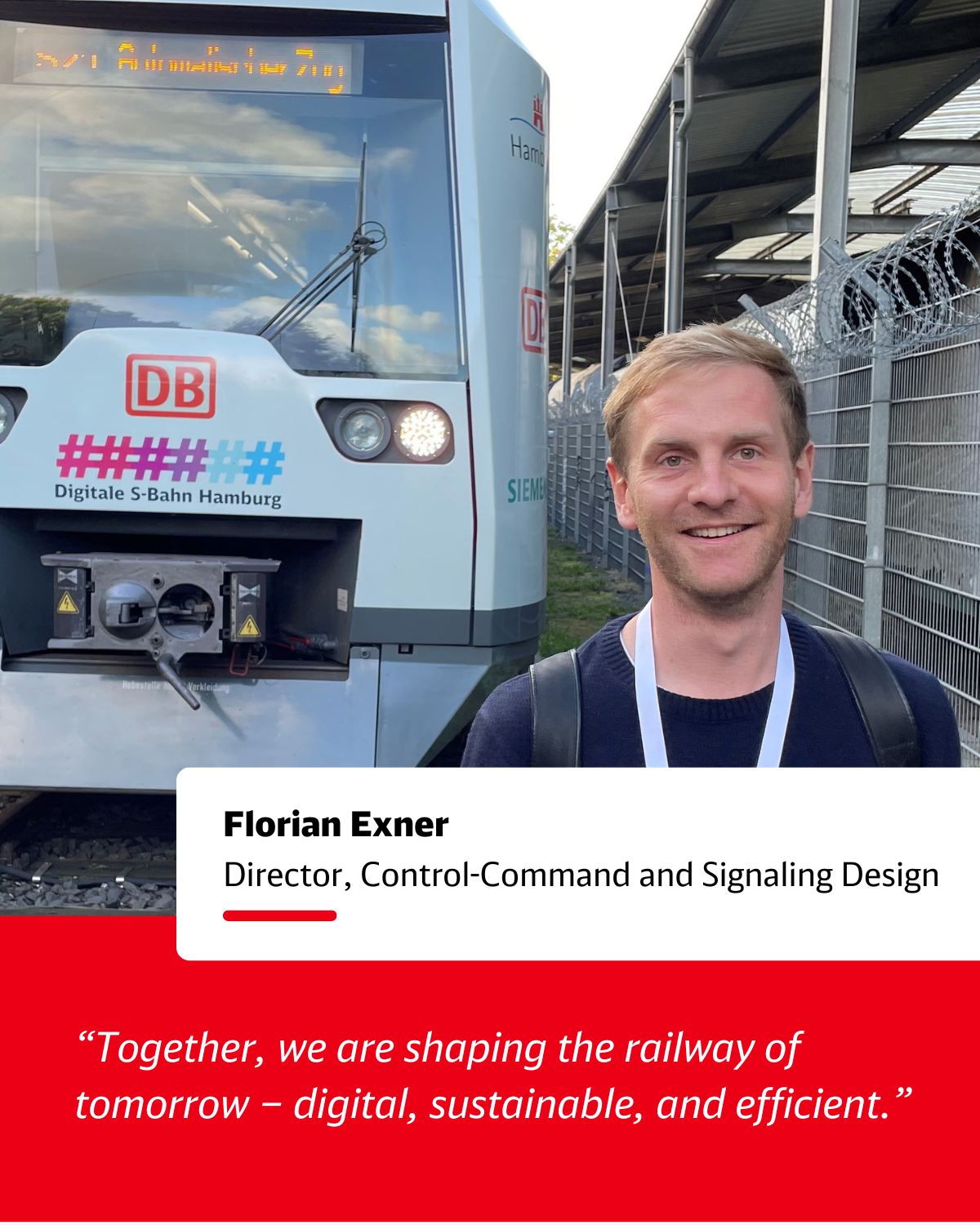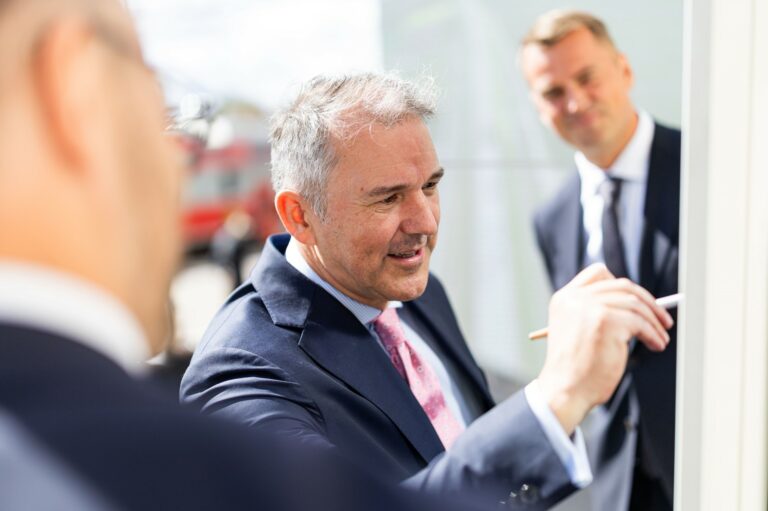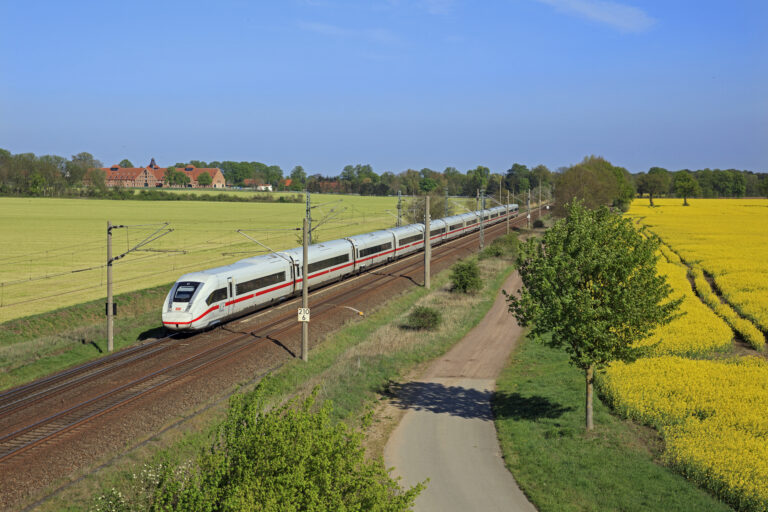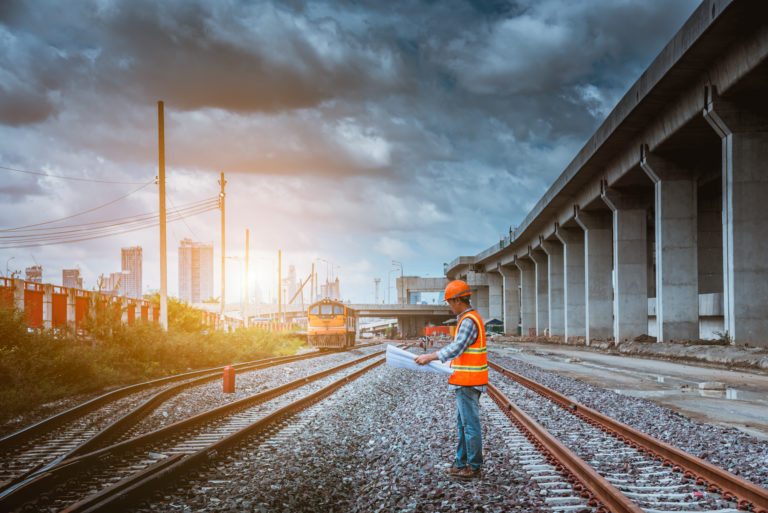Digital technologies, sustainable design and teamwork as a driver of innovation – these are the topics that play a central role in Florian Exner’s day-to-day work. As Head of Design Control and Safety Technology at DB E&C, he and his team are shaping the future of rail infrastructure. In this interview, he provides exciting insights into his projects, his day-to-day management work and shows why teamwork and technological innovation are inseparably linked.

Contact
DB Engineering & Consulting
EUREF-Campus 14
10829 Berlin
Germany
Florian, what exactly is your role at DB E&C – and what does a typical project day look like for you?
As Head of Design Control and Safety Technology (LST), I am responsible for many exciting projects in the field of LST as well as several great teams. My day-to-day work is a varied mix of strategic design, technical project management and employee development. Always with a clear focus on quality, adherence to deadlines and customer satisfaction. Every day brings new challenges – and that’s what makes my job so exciting.
Which specialist topics or technologies are you currently working on particularly intensively?
LST has been undergoing profound technological change for several years now. I was particularly involved in the design of the first highly automated S-Bahn in Hamburg with ETCS and Automatic Train Operation (ATO). I am currently working intensively on the introduction of the digital interlocking system. I am also interested in modern design methods such as digital, semi-automated design with the help of BIM methodology. This combination of innovative technology and new work processes offers enormous opportunities.
How do you manage to combine sustainable solutions in complex infrastructure projects?
For me, sustainable solutions are created when technological innovation, technical depth and holistic thinking work together. At DB E&C, we achieve this particularly well because we combine many years of experience in the design and implementation of complex LST projects with modern digital methods such as BIM and the 360° multisensor platform.
By recording data precisely and in a way that conserves resources during regular operation – without any road closures – we create a design basis that is not only efficient, but also permanently usable and can be integrated across all trades. In this way, we avoid media disruptions, reduce sources of error and sustainably increase quality.
At the same time, teamwork is the key: in interdisciplinary teams, we develop solutions that not only work technically, but also make economic, ecological and operational sense in the long term. For me, sustainable infrastructure planning means above all taking responsibility – for the project, for the environment and for the future of mobility.
What motivates you in your work – and what makes a project particularly exciting for you?
I am particularly motivated by the combination of technical challenges and real teamwork. In my role as a manager, what particularly appeals to me is how closely technical depth and strategic responsibility are linked. I enjoy developing solutions together with my team and at the same time ensuring that everyone has the best conditions to develop professionally and personally.
Our projects range from small individual measures to large corridor measures – they cover the entire spectrum of rail infrastructure projects. This diversity is what makes them so attractive and shows how strong a good team really is.
Where do you currently see the most exciting opportunities for innovation within DB E&C?
I see the most exciting opportunities for innovation at our company in the area of LST primarily in the consistent digitalization of our design and implementation processes. A good example of this is our 360° multi-sensor platform, which provides us with detailed data as a basis for design.
In combination with the BIM methodology and semi-automated design methods, this opens up completely new possibilities for making projects more efficient, transparent and collaborative.
Thanks to our decades of experience in the design and implementation of complex LST projects, we can not only speed up design processes, but also increase quality at the same time.
What makes teamwork at DB E&C special for you?
For me, teamwork at DB E&C is more than just completing tasks – it is the engine for real innovation and sustainable project success. Especially in complex infrastructure projects with a wide range of specialist disciplines, it is crucial that we communicate closely and transparently as a team, learn from each other and support each other.
What I particularly appreciate is the appreciative culture: everyone contributes their expertise, while at the same time we promote an open atmosphere in which different perspectives are expressly welcome. This not only strengthens cohesion, but also ensures that we can react flexibly to challenges and develop creative solutions.
As a manager, it is important to me to create an environment in which employees can develop their full potential – you can feel this in every successful project. For me, teamwork at E&C therefore also means taking responsibility together and celebrating success together.
What experience would you like to pass on to young engineers or career starters who want to get into infrastructure design?
Above all, I would like to tell young engineers and career starters that infrastructure projects are an incredibly varied and responsible field of work – at the same time, they can be complex and challenging. It is important to have an open attitude right from the start: Curiosity, a willingness to learn and a willingness to think outside the box.
Technical know-how is the basis, no question about it. But in infrastructure design in particular, it is just as important to think in a structured way, communicate clearly and network well in interdisciplinary teams. Those who understand this and actively live it can not only help shape projects, but also advance them sustainably.
My advice: look for mentors and colleagues who you can learn from, and don’t be afraid to ask questions and take responsibility – even if it sometimes takes effort. After all, it is precisely through practice and experience that you develop a feel for good solutions and the ability to maintain an overview even under pressure.
And last but not least: Always keep the big picture in mind – how your work contributes to people getting from A to B safely, comfortably and sustainably. This makes the job not only exciting, but also really meaningful.





